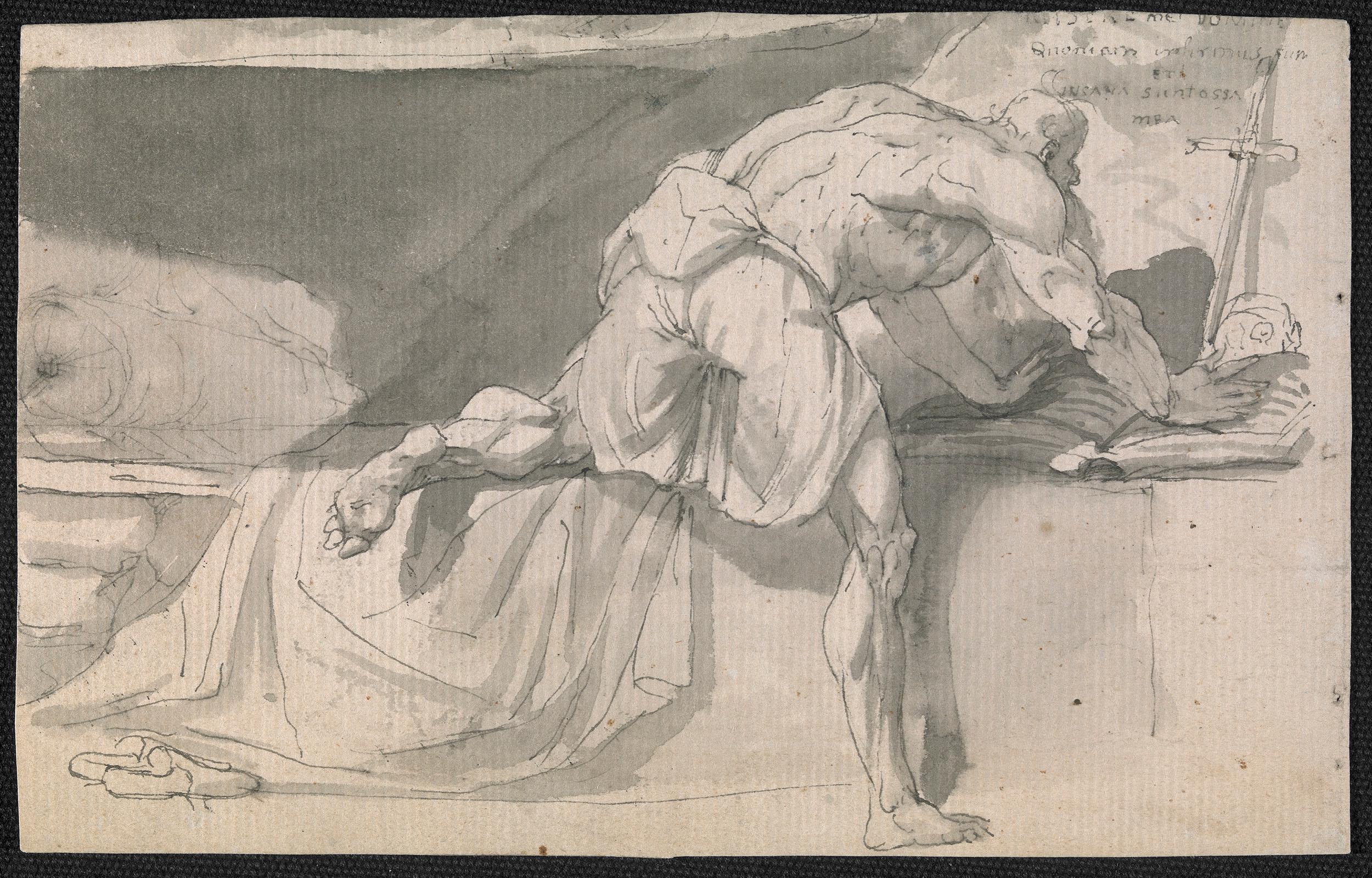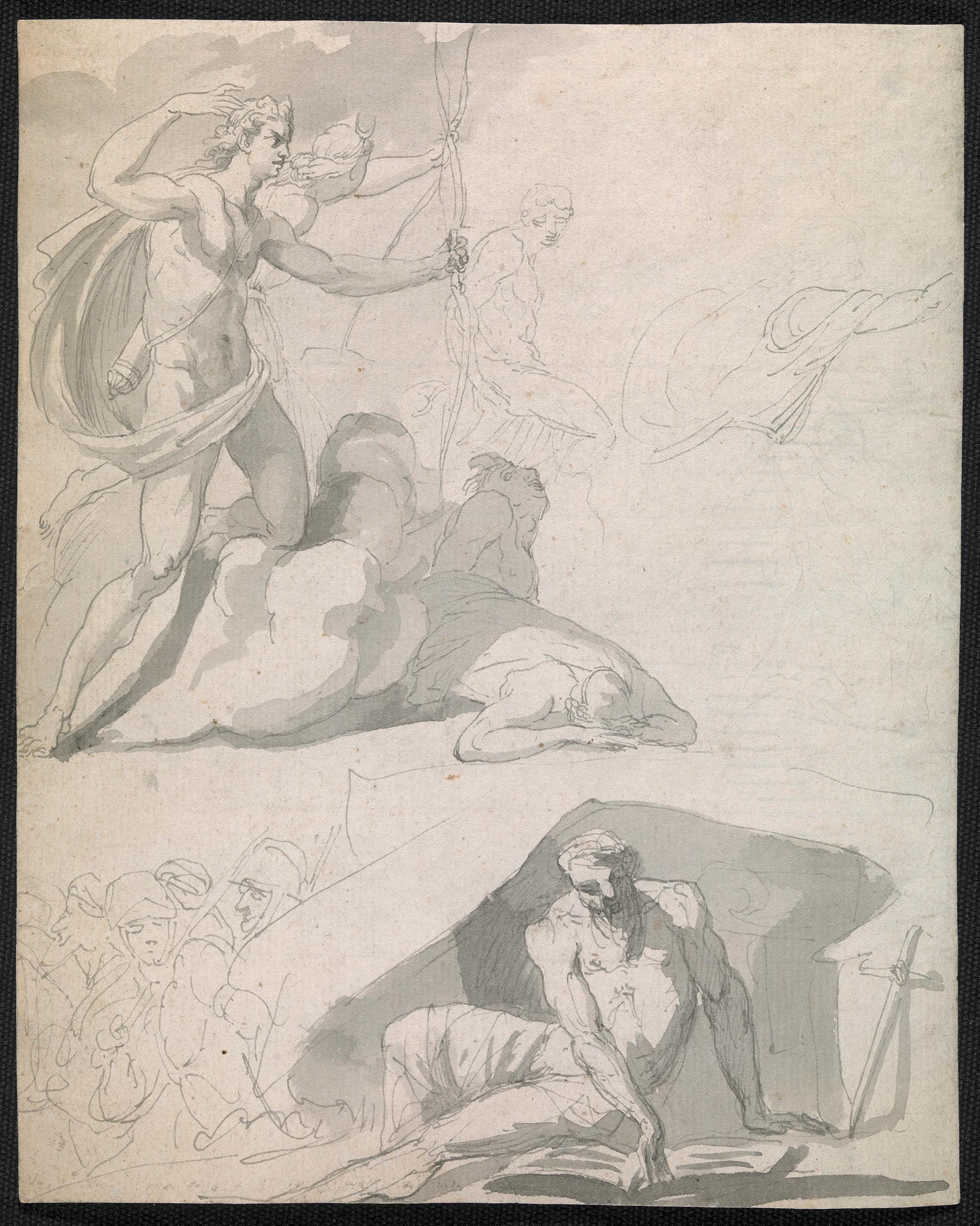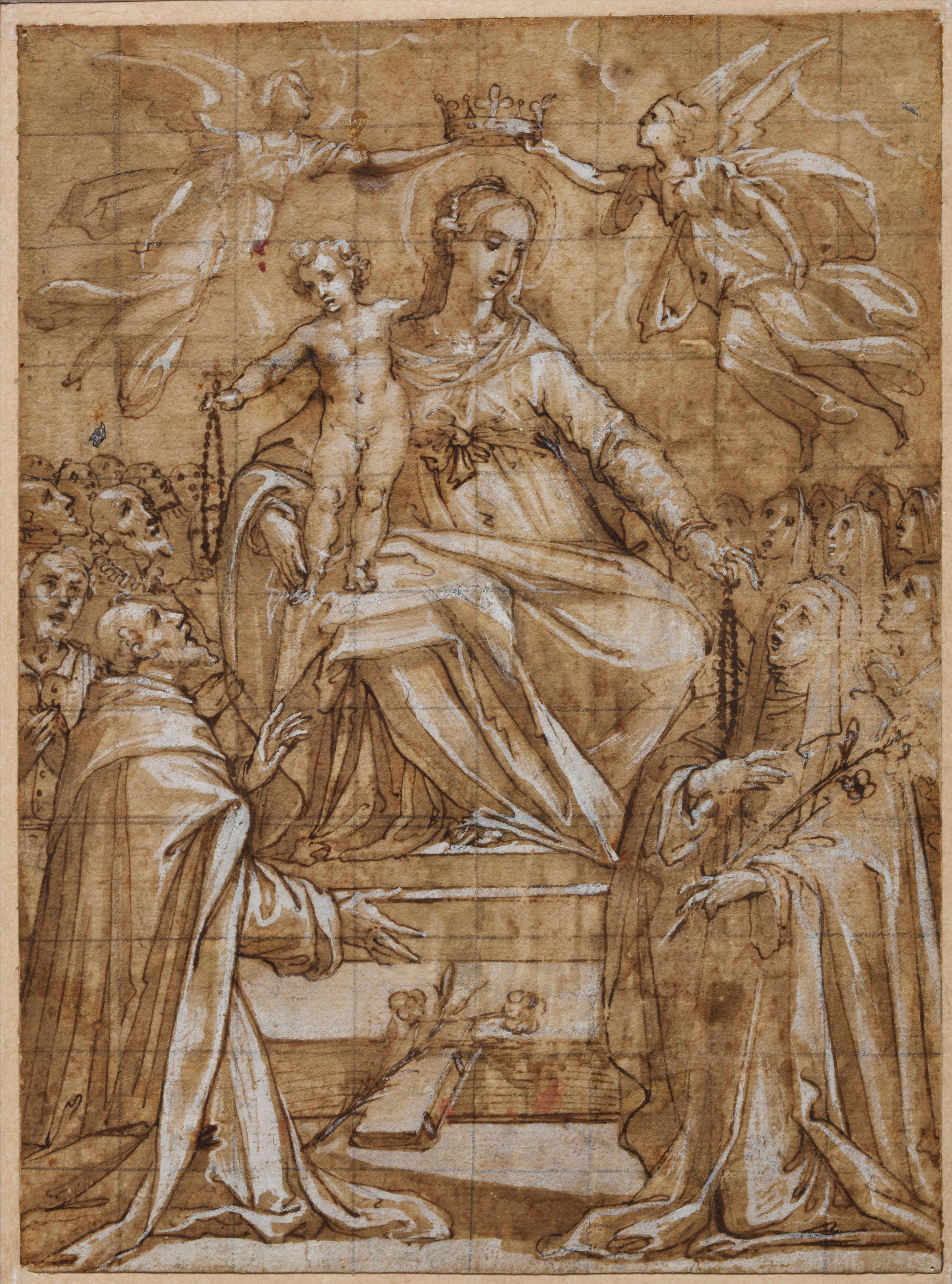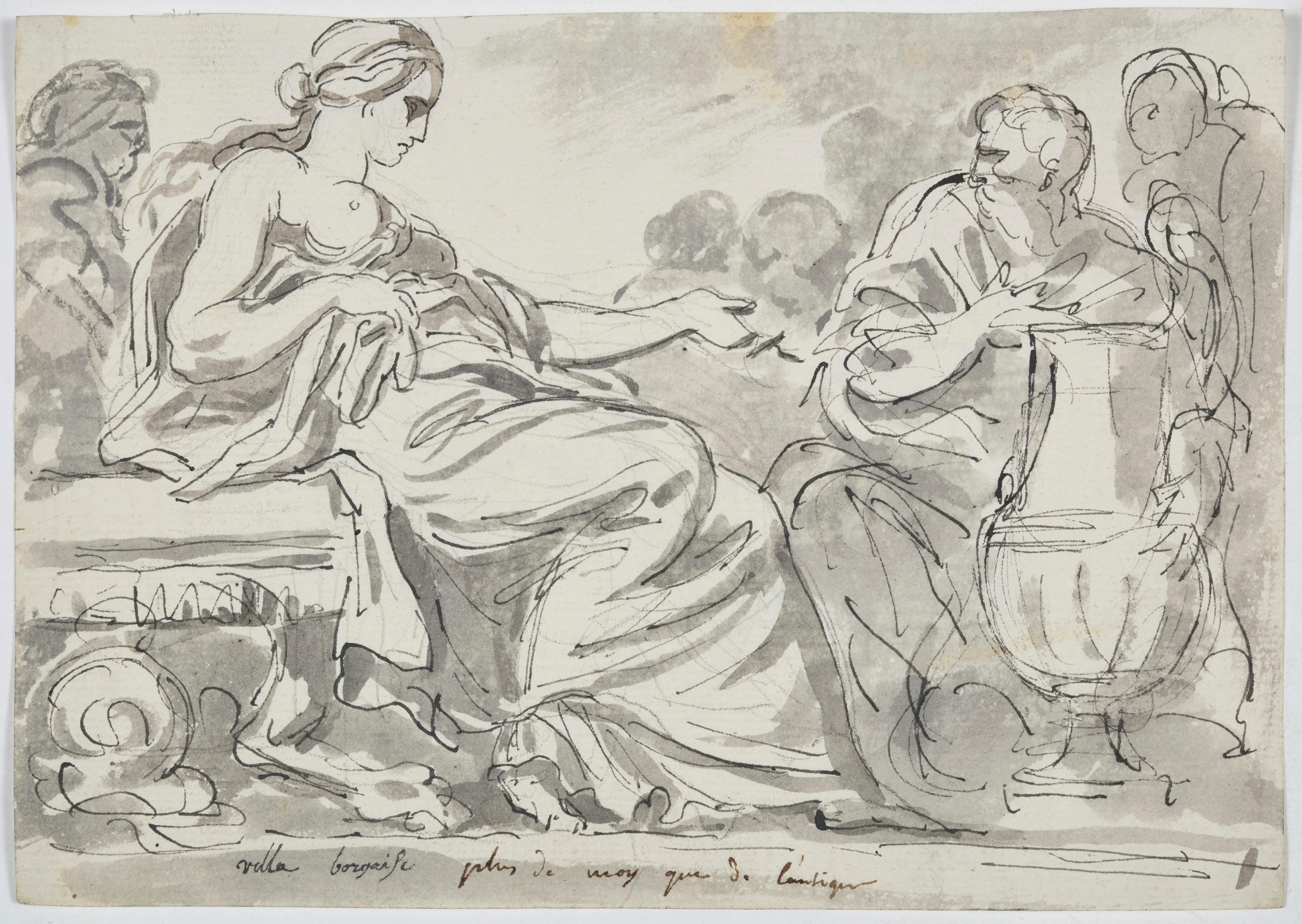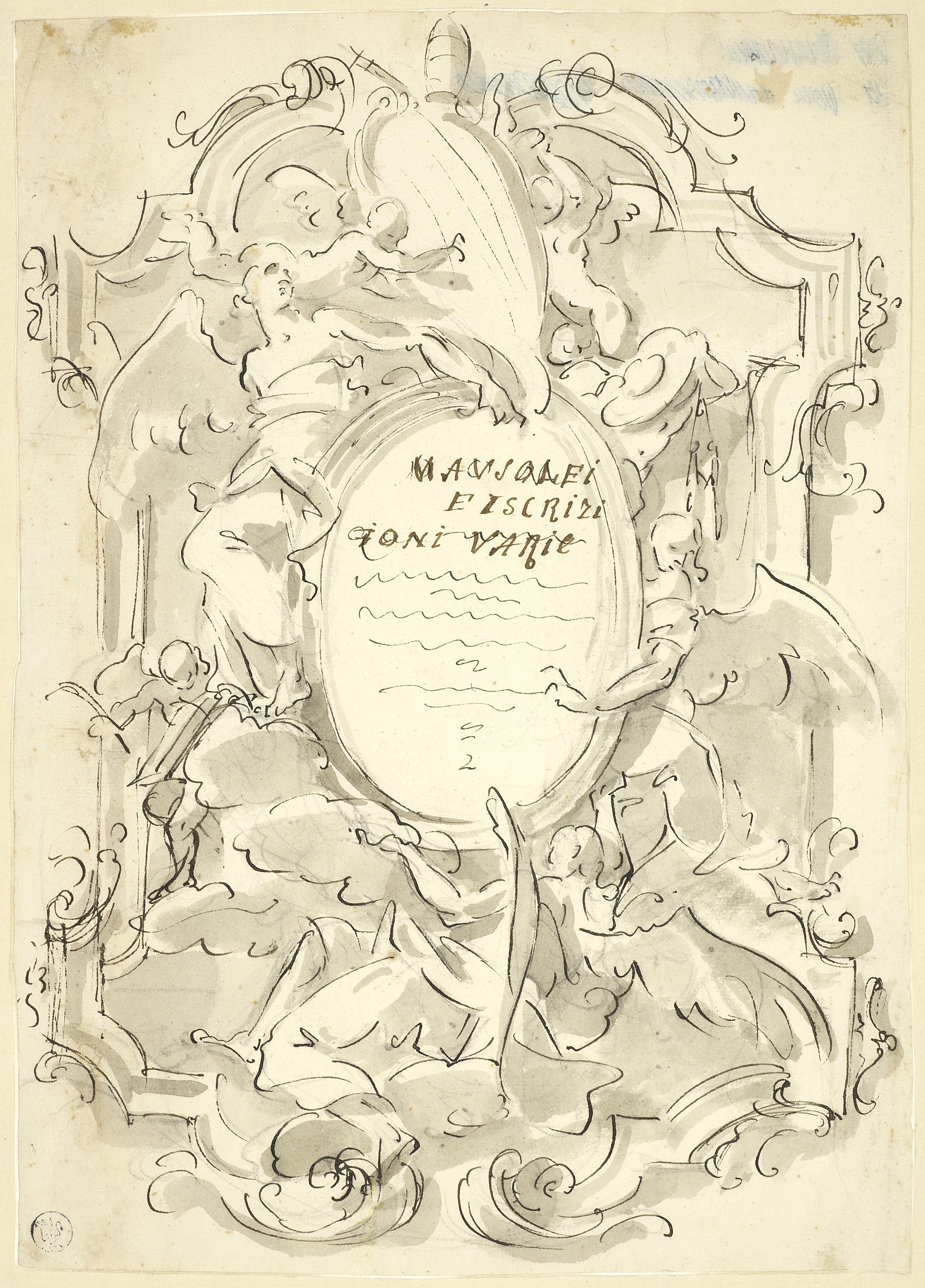Items Similar to Joachim von Sandrart (1606-1688) Biblical episodes, 3 original drawings
Want more images or videos?
Request additional images or videos from the seller
1 of 11
Joachim von SandrartJoachim von Sandrart (1606-1688) Biblical episodes, 3 original drawingscirca 1660
circa 1660
About the Item
Joachim von Sandrart (1606-1688)
Three Biblical episodes, 3 original drawings
- The Ascent of Elijah
- The Judgment of Solomon
- Benjamin receiving presents
Each one : 9.2 x 7.7 cm
Pen and Black ink, black ink wash on paper
In quite good condition, some foxings (please see photos)
In 19th century mount with the name of the artist and the title of each episode (in french)
Period frames (very damaged).
The three frames have same dimensions : 24,5 x 26 cm or 9,64 x 10.23 inches
The three drawings have to be compared to the Stories of Moses, drawing now in the Louvre Museum.
They have the same floral framing and same technique and are overall very stylistically close. It can be advanced they were produced at the same time by the artist.
Joachim von Sandrart was born in Frankfurt am Main in 1606, but his family originated from Mons/Bergen.
According to his dictionary of art called the Teutsche Academie, he learned to read and write from the son of Theodor de Bry, Johann Theodoor de Brie and his associate Matthäus Merian, but at age 15, he was so eager to learn more of the art of engraving, that he walked from Frankfurt to Prague to become a pupil of Aegidius Sadeler of the Sadeler family. Sadeler in turn urged him to paint, whereupon he travelled to Utrecht in 1625 to become a pupil of Gerrit van Honthorst, and through him he met Rubens when he brought a visit to Honthorst in 1627, to recruit him for collaboration on part of his Marie de' Medici cycle. Honthorst took Sandrart along with him when he travelled to London.
In 1627 Sandrart booked a passage on a ship from London to Venice, where he was welcomed by Jan Lis and Nicolao Renier. He then set out for Bologna, where he was met by his cousin on his father's side Michael le Blond, a celebrated engraver. With him, he crossed the mountains to Florence, and from there on to Rome, where they met Pieter van Laer. Sandrart became famous as a portrait-painter. After a few years he undertook a tour of Italy, traveling to Naples, where he drew studies of Mount Vesuvius, believed to be the entrance to the Elysian fields described by Virgil. From there he traveled to Malta and beyond, searching for literary sights to see and paint, and wherever he went he paid his way by selling portraits. Only when he was done traveling did he finally return to Frankfurt, where he married Johanna de Milkau.
Afraid of political unrest and plague, he moved to Amsterdam with his wife in 1637.
In Amsterdam he worked as a painter of genre works, and portraits. He won a very good following as a painter, winning a lucrative commission for a large commemorative piece for the state visit by Maria of Medici in 1638, which hangs in the Rijksmuseum. This piece cemented his reputation as a leading painter, and in 1645 Sandrart decided to cash in and go home when he received an inheritance in Stockau, outside Ingolstadt.
Though he rebuilt the old homestead, it was burned by the French. He sold it and moved to Augsburg, where he painted for the family of Maximilian I, the Elector of Bavaria. When his wife died in 1672, Sandrart moved to Nuremberg, where he married Hester Barbara Bloemaart, the daughter of a magistrate there. This is where he started writing. A he is well known as an author of books on art, some of them in Latin, and especially for his historical work, the Teutsche Academie, published between 1675 and 1680. This work is an educational compilation of short biographies of artists, that was inspired by Karel van Mander's similar Schilder-boeck.
- Creator:Joachim von Sandrart (1606 - 1688)
- Creation Year:circa 1660
- Dimensions:Height: 3.63 in (9.2 cm)Width: 3.04 in (7.7 cm)
- Medium:
- Movement & Style:
- Period:1640-1649
- Condition:
- Gallery Location:Paris, FR
- Reference Number:
About the Seller
5.0
Platinum Seller
These expertly vetted sellers are 1stDibs' most experienced sellers and are rated highest by our customers.
Established in 2018
1stDibs seller since 2019
209 sales on 1stDibs
Typical response time: <1 hour
- ShippingRetrieving quote...Ships From: Paris, France
- Return PolicyA return for this item may be initiated within 14 days of delivery.
More From This SellerView All
- French Neo classical school, Allegory of Time, original drawingLocated in Paris, FRNeo classical school, France, end of the 18th Century Allegory of Time, Pen and black ink on paper, gray ink wash 30.5 x 19 cm irregularly shaped In g...Category
1790s Old Masters Nude Drawings and Watercolors
MaterialsIndia Ink
- François Boitard (1670-1715) Abraham and the Three Angels, original drawingLocated in Paris, FRFrançois Boitard (1670-1715) Abraham and the Three Angels, Signed lower left "Boitard (...) fecit (...)" 28 x 44 cm Pen and ink on yellow prepared paper I...Category
Early 1700s Old Masters Figurative Drawings and Watercolors
MaterialsInk
- H F Gravelot (1699-1773) Two Allegories, Faith and Vigilance, Pen and InkBy Hubert-François GravelotLocated in Paris, FRHubert-François Gravelot (1699-1773) Two Allegories : Vigilance and Faith Pen, black Ink, and black wash on paper 7.9 x 4.8 each one Framed 22 x 26 cm Old framing that needs to be...Category
1760s Old Masters Figurative Drawings and Watercolors
MaterialsInk
- Louis-Félix de La Rue (1730-1777) A Mythological scene, drawingBy Louis-Félix DelarueLocated in Paris, FRLouis-Félix de La Rue (1730-1777) A biblical or mythological episode Signed and dated lower right (under the mount, see photos of the drawing out of frame) ...Category
1770s Old Masters Figurative Drawings and Watercolors
MaterialsInk
- 18th Century Roman School , A Palazzo with antiques, drawingLocated in Paris, FR18th Century Roman School A Palazzo with antiques Brown ink and pen, brown ink wash on paper 12.5 x 20 cm Framed : 28,5 x 35.5 This nice drawing represents a genre scene, with a nobleman, priests, a mother and her children...Category
Early 18th Century Old Masters Interior Drawings and Watercolors
MaterialsInk
- William Moritz (1816-1860) An historical scene, drawing signedLocated in Paris, FRWilliam Moritz (1816-1860) An historical scene, signed lower left Brown ink and brown ink wash on paper 17 x 16.5 cm Framed : 27 x 23.5 cm The subject of this charming drawing rema...Category
1850s Old Masters Interior Drawings and Watercolors
MaterialsInk
You May Also Like
- Eighteenth century Old Master drawing - St JeromeBy John Hamilton MortimerLocated in London, GBPen, ink and wash Framed dimensions: 9 ½ x 11 ¼ inches Drawn c. 1763 This small, powerful study shows St Jerome contemplating the bible with a cross and sk...Category
18th Century Old Masters Figurative Drawings and Watercolors
MaterialsInk, Pen
- Eighteenth century Old Master drawing - Apollo destroying Niobe's childrenBy John Hamilton MortimerLocated in London, GBPen, ink and wash Framed dimensions: 13 x 11 ¼ inches Drawn c.1765 Verso: a study of a hanged man Mortimer has filled this small sheet with action, depicting in the top right, Apollo and Artemis...Category
18th Century Old Masters Figurative Drawings and Watercolors
MaterialsInk, Pen
- Three drawings by François Boucher in a mounting by Jean-Baptiste GlomyBy François BoucherLocated in PARIS, FRWe would like to thank Juliette Parmentier-Courreau of the Custodia Foundation for her welcome and support during the consultation of Glomy’s Journal des Ouvrages. This spectacularly large "feuille de desseins ajustés" commissioned by François Boucher from Jean-Baptiste Glomy is emblematic of the painter's art and mastery of rocaille. It is also fully representative of the taste of this period in the field of decorative arts. The largest of these three drawings, placed at the bottom of the composition, is particularly interesting: dating from around 1756, it constitutes a modello (apparently unpublished) for the frontispiece of the "Catalogue des tableaux de Monsieur de Julienne"), preserved in the Morgan Library in New York. 1. François Boucher, the master of French rocaille The extraordinary career of Francois Boucher was unmatched by his contemporaries in versatility, consistency and output. For many, particularly the writers and collectors who led the revival of interest in the French rococo during the last century, his sensuous beauties and plump cupids represent the French eighteenth century at its most typical. His facility with the brush, even when betraying the occasional superficiality of his art, enabled him to master every aspect of painting – history and mythology, portraiture, landscape, ordinary life and, as part of larger compositions, even still life. He had been trained as an engraver, and the skills of a draftsman, which he imbued in the studio of Jean-Francois Cars (1661 – 1738), stood him in good stead throughout his career; his delightful drawings are one of the most sought-after aspects of his oeuvre. As a student of Francois Lemoyne (1688 - 1737), he mastered the art of composition. The four years he spent in Italy, from 1727-1731, educated him in the works of the masters, classics and history, that his modest upbringing had denied him. On his return to Paris in 1734, he gained full membership of the Royal Academy of Painting and Sculpture with his splendid Rinaldo and Armida (Paris, Musée du Louvre). Although, throughout his career, he occasionally painted subjects taken from the Bible, and would always have considered himself first as a history painter, his own repertoire of heroines, seductresses, flirtatious peasant girls and erotic beauties was better suited to a lighter, more decorative subject matter. His mastery of technique and composition enabled him to move from large scale tapestry...Category
1750s Old Masters Figurative Drawings and Watercolors
MaterialsChalk, Ink
- Modello for the Virgin of the Rosary, a drawing by Francesco Vanni (1563 - 1610)Located in PARIS, FRFrancesco Vanni is one of the last representatives of the long Sienese pictorial tradition. In this masterly composition in pen and ink wash, he presents the Virgin of the Rosary, holding the Child Jesus on her lap, surrounded on her right by Saint Dominic and on her left by Saint Catherine of Siena. The presence of these two emblematic saints of the Dominican order is a reminder of the devotion of this order to the Rosary. 1. Francesco Vanni, a Sienese painter of the Counter-Reformation Francesco Vanni was the most important Sienese painter of the late sixteenth century and a key Italian Counter-Reformation painter. He developed a very specific style, inspired not by Florentine models but rather by the Roman, Bolognese and Marche schools, and in particular by the work of his contemporary Federico Barocci (Urbino 1535 - 1612), despite the two artists never meeting. Francesco Vanni was born in Siena around 1563-1564. His father died in 1567 and his mother remarried Arcangelo Salimbeni (1536 - 1579), then one of Siena’s leading painters. His half-brother Ventura Salembini (1568 - 1613) also became a well-known painter. He continued his apprenticeship in Bologna and Rome, where he joined the painter Giovanni de Vecchi’s (1536 - 1614) studio, where he was greatly influenced, like other Tuscan painters of the time, by the art of Federico Barocci. He devoted himself mainly to religious painting, following the canons of the Counter-Reformation. Travelling between Siena, Rome, Bologna and Parma, in 1604, he settled in Siena, where he ended his life. Vanni was also an important member of the Confraternity of the Sacro Chiodo, renowned for its demanding religious practices. His legacy also includes some important engraved work. 2. Description of the artwork The Virgin is depicted enthroned in majesty, slightly taller than the other figures that she dominates from her pedestal. Her wide robe with marked folds evokes Renaissance statuary. She is crowned by two angels in the sky. These two angels are a reminder of the custom of adding angels to crown 13th century icons which was frequent at Vanni’s time. The Child Jesus is standing on the Virgin’s right knee. With her left hand she holds out a rosary to Catherine of Siena, identifiable by a branch of lily in her hand. In a symmetrical gesture, the Child Jesus also holds out a rosary to St Dominic. Two of St Dominic’s attributes are to be found at the foot of the Virgin: a book and a branch of lilies. Vanni gives particularly delicate treatment to St. Dominic's long and slender hands. The two outstretched rosaries form the link between the heavenly register of the Virgin and the Child Jesus and the earthly register of the two Dominicans who are not crowned with a halo. This and the fact they are followed by a large crowd, indicates that they are both represented as part of the multitude of the living called to pray to the Rosary. According to the classical iconographic tradition, it would be plausible to consider that the figure looking at the viewer on the extreme left of the drawing could be a self-portrait of the painter. Francesco Vanni's face is known to us from a self-portrait kept in the Pinacoteca Nazionale in Siena. The squaring of the drawing suggests that it was used for a larger-scale altarpiece, probably for a church dedicated to St Dominic or for a Dominican convent. As of today, we have not identified the painting for which this drawing served as a preparatory modello. The Madonna of the Rosary in the Cathedral of Pitigliano (painted by Francesco Vanni in 1609) differs quite significantly from our drawing by the addition of Pope Pius V, and the inclusion of St. Dominic and St. Catherine in the celestial register. We believe that our drawing predates this painting because of its more symmetrical composition, and less Baroque influence. The presence of Saint Catherine of Siena, particularly venerated in his native town, to which Francesco Vanni returned frequently from 1590 onwards, leads us to propose a date of around 1590 - 1600 for this drawing. 3. The Rosary and the Dominican Order In order to clarify the iconographic meaning of this artwork, it is worth recalling the role of Saint Dominic in the spread of the Rosary prayer. Dominic Nuñez de Guzman was born around 1170 in Caleruega (near Burgos) in Spain and died in 1221 in Bologna, Italy. He was the founder of the order of friar preachers, commonly known as the Dominicans. He was canonised by the Church in 1234 and has since been celebrated under the name of Saint Dominic. After three days of prayer in the forest of Bouconne, near Toulouse, Dominic is said to have received the Rosary as a means of converting the Cathar population. The Dominicans subsequently made a special effort to promote this form of meditative prayer. Pope Pius V, a Dominican, included the feast of the Rosary (on October 7th) in the liturgical calendar in 1571. Rosary prayer has evolved over the centuries and traditionally consists of the recitation of three rosaries (four since St John Paul II). Each rosary consists of five tens of "Hail Mary...Category
16th Century Old Masters Figurative Drawings and Watercolors
MaterialsPen, Ink
- Study for a Frontispiece, a baroque drawing by Giovanni Antonio PellegriniBy Giovanni Antonio PellegriniLocated in PARIS, FRThis masterly frontispiece study, executed with a very sure hand, testifies to the survival of the great Baroque taste in 18th century Venice. It could be one of the very last works by Giovanni Antonio Pellegrini: the few lines that cross the papal arms evoke those of Benedict XIV, who became pope in 1740, one year before the artist's death. 1. Giovanni Antonio Pellegrini and the European influence of Venetian history painting in the 18th century Giovanni Antonio Pellegrini was born in Venice in 1675 and trained in the studio of the Milanese painter Paolo Pagani (1655 - 1716). Pagani, who had been living in Venice since 1667, took him to Moravia and Vienna from 1690 to 1696. After a stay in Rome from 1699 to 1701, Pellegrini married Angiola Carriera in 1704, the sister of the great pastelist Rosalba Carriera. From 1708 onwards, Pellegrini left Venice and began an extensive tour of Europe: he worked in England between 1708 and 1713, where he met great success, particularly at Kimbolton Castle and Castle Howard. He then worked in Germany and the Netherlands, then in Bohemia and Austria, before returning briefly to England in 1719. In 1720 he was in Paris where he decorated the ceilings of the Royal Bank for John Law...Category
1740s Old Masters Figurative Drawings and Watercolors
MaterialsInk
- Study in the Antique Style, a neoclassical drawing by Augustin PajouLocated in PARIS, FRIn this lively and fresh drawing, probably taken from one of the artist's notebooks, Pajou presents us with a composition freely inspired by antiquity, as a souvenir of a visit to th...Category
1750s Old Masters Figurative Drawings and Watercolors
MaterialsInk
Recently Viewed
View AllMore Ways To Browse
Old Outside Wells
Old Master Italian Drawings
Antique Drawing Set
Old Master Drawings Framed
Biblical Art
Set Of 3 Drawings
Biblical Painting
Antique Floral Drawings
De Von
Latin Masters
Italian Ink Wash
Old Books Sets
Biblical Figurative
Travel Ink Drawing
Black Antique Photo Frames
Frankfurt Am Main
Old Master Paintings Venice
Walk And Dior
